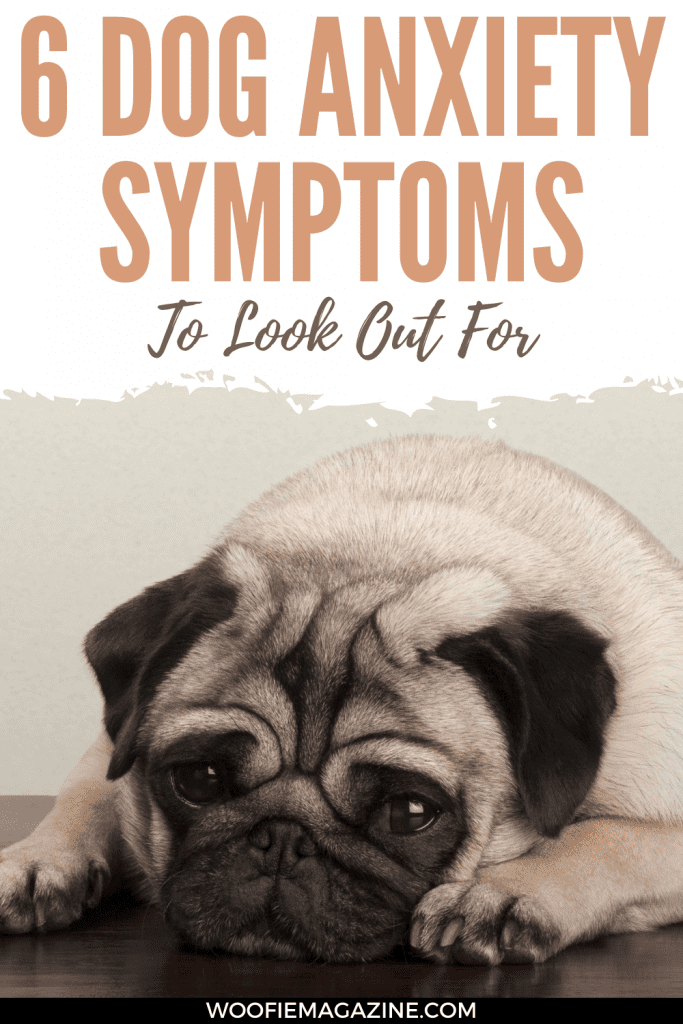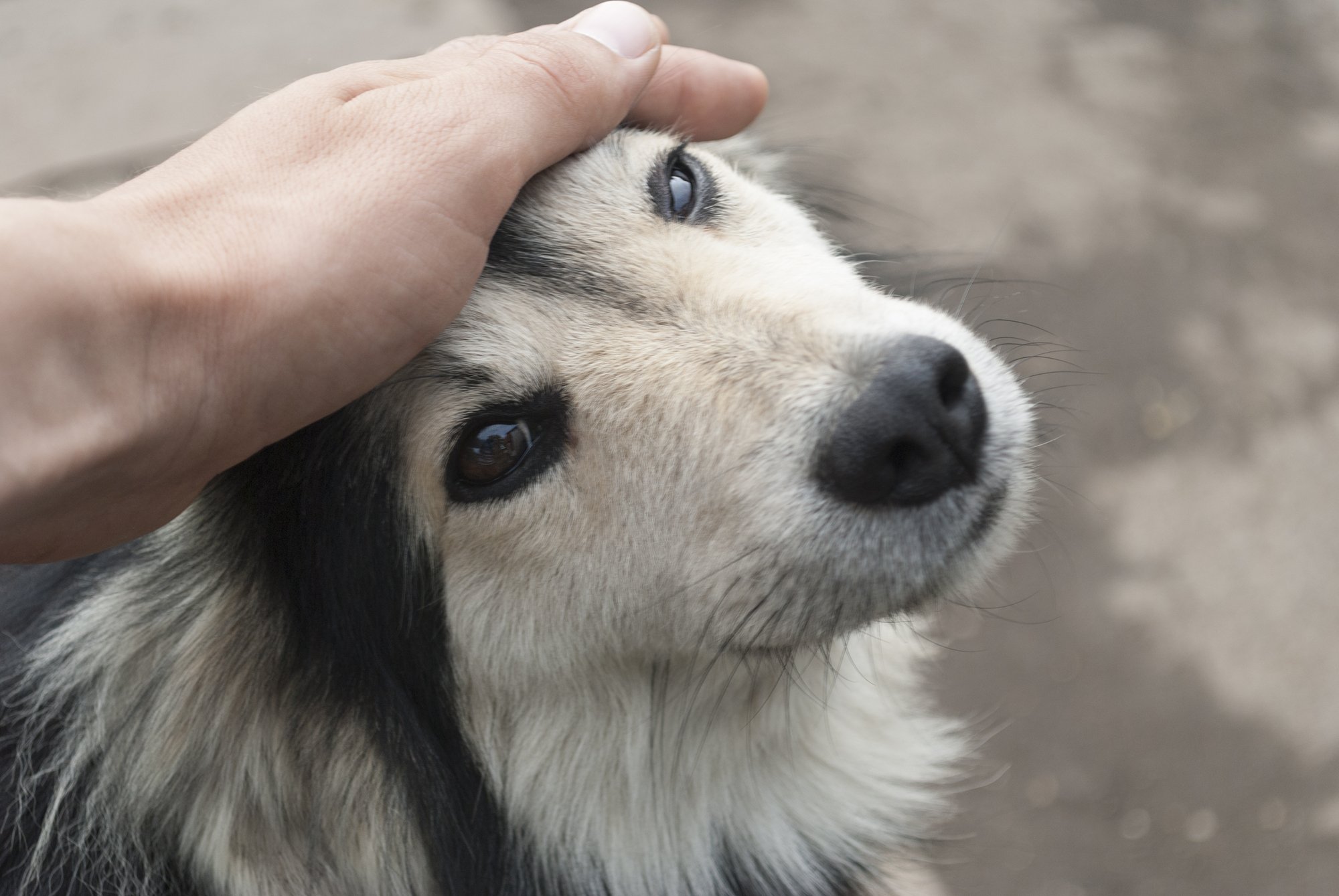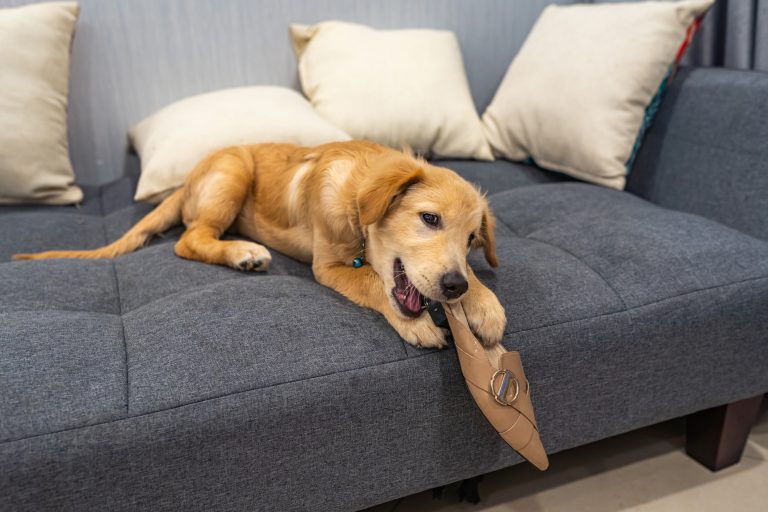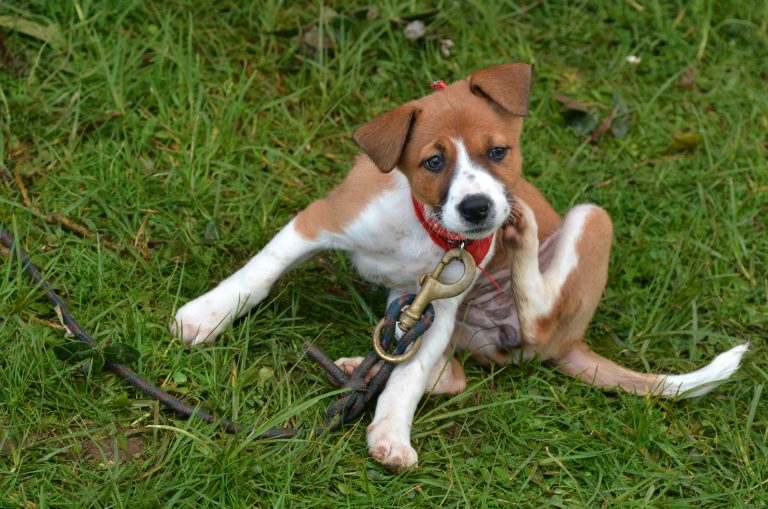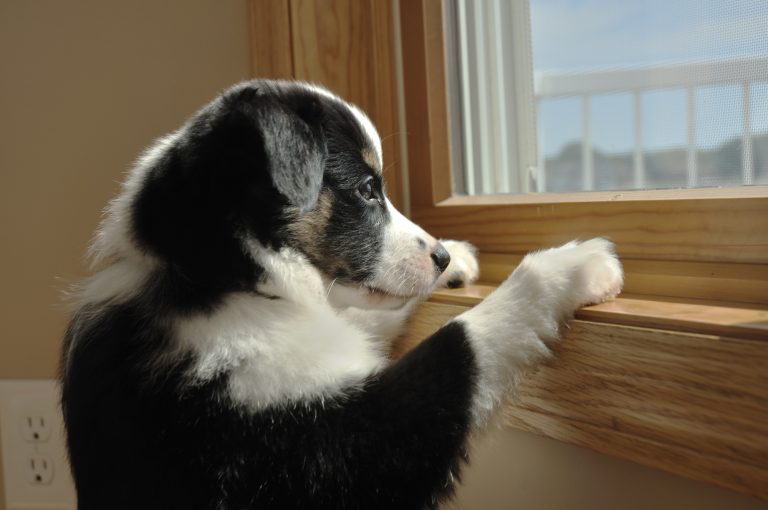6 Dog Anxiety Symptoms To Look Out For
Do you know that 20 to 40% of dogs suffer from anxiety? This means that there’s a good chance that your precious pup might have some common dog anxiety symptoms, and you just don’t know it! If this is the first time you’re hearing about dog anxiety, fear not as I have some tips below that will help you as you embark on your dog care journey.
Anxiety is a normal emotion, but if it gets severe, it can be unpleasant (for both you and your dog). In fact, some might argue that anxiety in dogs is a bit more severe because they are unable to communicate their distress verbally. Instead, their anxiety manifests itself in (unfortunately) often destructive ways.
This makes it even more important to ensure that you understand what the common symptoms of anxiety are in dogs so that you can correctly identify them and help your dog if they’re having a rough time. If dog anxiety is not treated in a timely manner, it can cause major behavioural problems, and that’s no good for anybody.
So, how do you know if your dog has anxiety, what type of anxiety your dog could be struggling with, or how to treat it? Let’s check it out below…
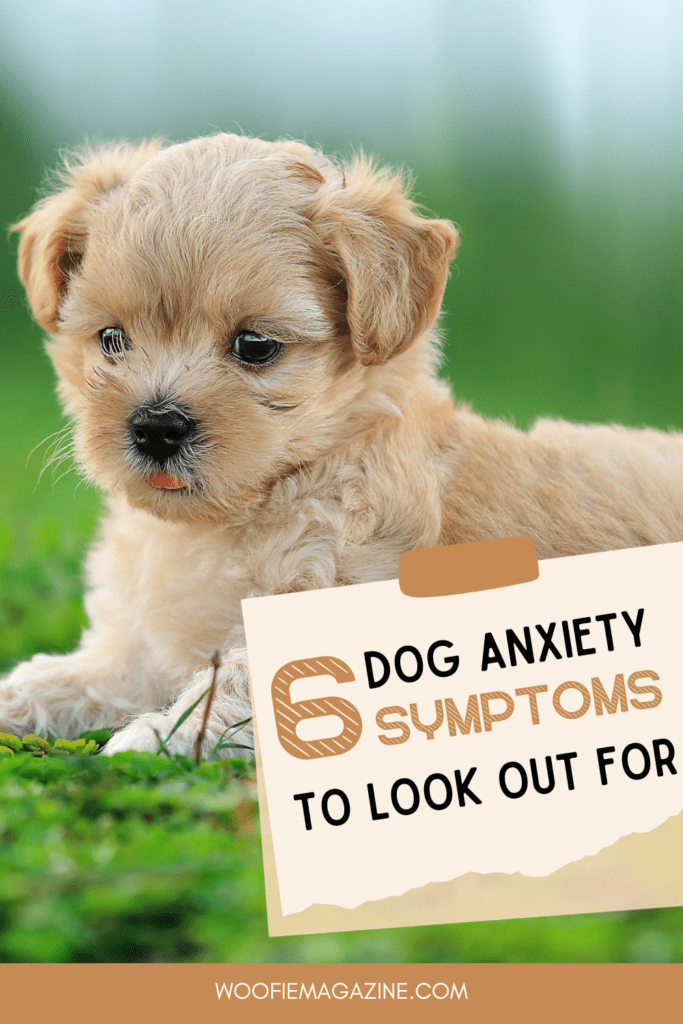

3 Causes of Anxiety in Dogs
Anxiety in dogs can be due to many reasons. The most common reasons are fear, separation, and aging. However, you might find that your dog is anxious simply due to its breed. Yep, certain dog breeds are naturally more anxious.
Their anxiety usually manifests itself in the form of separation anxiety (which we’ll discuss below). These breeds include Border Collies, King Charles Spaniels, Jack Russel Terriers, and Australian Shepherds.
If your dog doesn’t fall into one of the breeds listed above and isn’t “naturally” anxious, here’s what might be causing it.
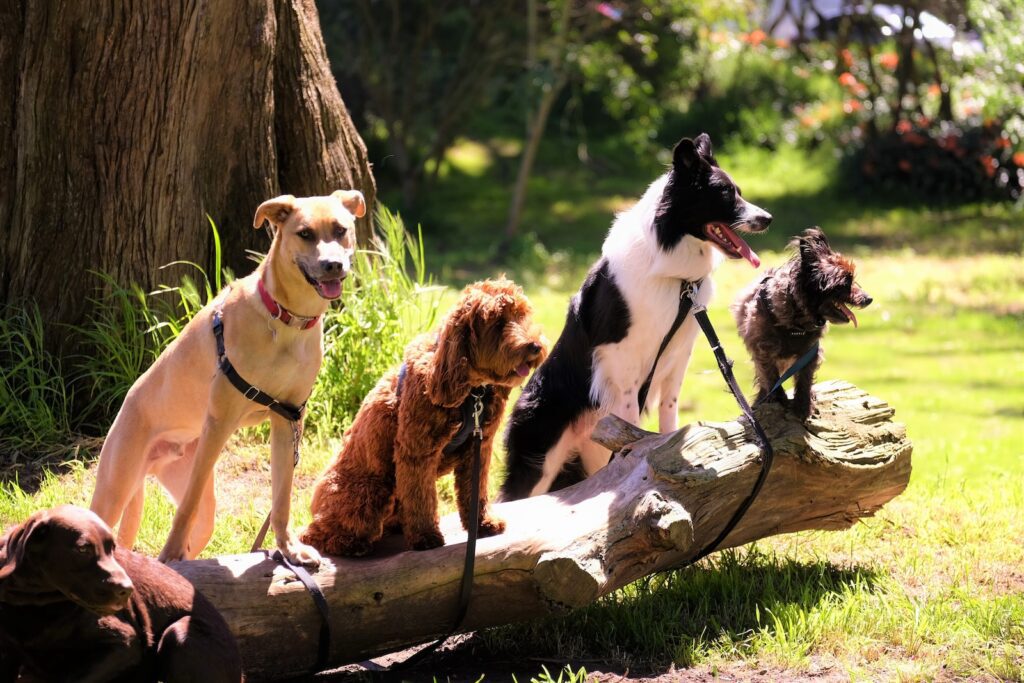

1. Separation Anxiety in Dogs
Some dogs have separation anxiety, which means that they feel panicky whenever you leave them alone. It occurs in dogs that have established a profound attachment to a specific person. Still, it can sometimes also happen due to previous abuse (where they were left alone for long periods, especially if they were chained up).
It can also happen when the dog is moved to a new place or subjected to a new routine. If their “special person” isn’t there to help them through the change, then the dog might panic. In severe cases, this might cause extensive barking and even aggression as they cannot process the feelings of anxiety any other way.
2. Fear-Related Anxiety
Dogs are very sensitive creatures and can sense things even before they happen. They can even “feel” the arrival of a thunderstorm before it comes, and that can trigger an anxiety attack or odd behaviour.
Things like thunderstorms and fireworks can trigger a feeling of anxiety in dogs. If it goes on for too long, it could cause them to develop hypersensitivity to the noises or events. However, it’s important to remember that the main cause of anxiety is a secondary reaction to fear.
Removing them from fearful situations or helping train them not to be afraid of certain noises, people, or objects can help ease both the fear and the anxiety.
3. Age-Related Anxiety
Age-related anxiety can be linked to cognitive dysfunction syndrome (CDS) and is common in older dogs. If you suspect that this is the cause of your dog’s anxiety, it’s important to take them to the veterinarian for an evaluation.
You’ll often likely notice a decline in memory, perception, and learning processes if this is the case. The cause of the anxiety is the loss of memory and perception (which translates into fear). They are unsure of what’s occurring, which causes anxiety, understandably!


6 Common Dog Anxiety Symptoms
Regardless of the cause of your dog’s anxiety, it will likely manifest itself in a few common ways. Below are some of the most common signs of anxiety in a dog so you’re aware of what to look out for.
1. Non-Stop Barking
When dogs see something outside the gate or hear a suspicious noise, they bark, and that’s very common. Or if you have a new puppy in the house and it’s getting used to the environment, it will bark alot. In fact, it’s perfectly normal. However, if your dog is continuously barking for no reason, then it might be a symptom of anxiety.
Dogs bark excessively when they are left alone at home, and they also bark due to fear. They may be afraid of specific people or loud noises, especially late at night. These loud noises also include violent thunderstorms, fireworks, and loud cars passing by. If the barking doesn’t subside within a few minutes, it’s a good indicator that they’re experiencing some level of anxiety.
2. Urinating in the House
Dogs who have separation anxiety often urinate or defecate in the house, shortly after their owner leaves. Some breeds of dogs even leave behind a trail of pee as they walk around the house, and this can be a result of the fight-or-flight response. You might think that the dog has forgotten all of its special training, but actually, this frequent urination is due to fear, anxiety, and a resulting sense of vulnerability.
3. Hiding
Dogs who are suffering from anxiety will try their absolute best to avoid situations, people, and things that frighten them. This may mean that they hide under the table, leave the room or hide behind their owner’s leg when introduced to something that causes anxiety.
However, the good thing about this dog anxiety symptom is that it can usually be treated with the help of a good dog trainer. Dog trainers specialising in anxiety will employ techniques that help to keep the dog relaxed.
Usually, these professional dog trainers will first help you to identify the things which frighten them and then when the dog starts to feel safe again, re-introduce it to the scary stuff at a level that the dog can handle.
4. Shaking and Trembling
Just as human beings start to shake during anxiety attacks, dogs can have similar reactions.
However, in dogs, shaking and trembling can be a sign of moderate to severe anxiety. Usually, this symptom of dog anxiety results from a sudden environmental change, but injury or illness can also be other causes.
If this is the case, your dog may appear worried and upset. In this case, you may notice that their eyes are wider and dilated, their brow is furrowed, and their ears look more expressive.
All are apparent physical dog anxiety symptoms and should be taken seriously. To treat this kind of anxiety, you might need to ask a trainer or your vet about behavioural therapy and perhaps anti-anxiety medication.


5. Pacing
If you ever notice that your dog is pacing up and down the house for no reason, then it’s likely to be feeling anxious as certain dog breeds use pacing as a technique to relieve their anxiety and nervousness.
For example, dogs may pace if they see any unwanted person or animal inside the house or outside the front gate. This is a dog’s natural behaviour and there’s nothing to be concerned about.
However, if pacing seems unusual for your dog and it’s not something they normally do, then it is a sign of anxiety that’s caused by something else (although even if they’re getting anxious about a squirrel outside and that’s causing them to pace, you should still consult your vet).
6. Tail Thumping
When a dog wags its tail happily when you come home from the office, it’s merely greeting you. As humans, though, we tend to think that all tail wagging signs are associated with happiness; that’s simply not the case.
Tail wagging and a submissive grin can also be expressions of unhappiness and anxiety in the dog world. If your dog wags its tail slowly and sheepishly, then this means that your loyal companion is feeling uncomfortable.
In this case, you need to make it feel more comfortable by spending time with it or taking it out for a walk. Fresh air and sunshine will help them just as they would help you during an anxiety attack!
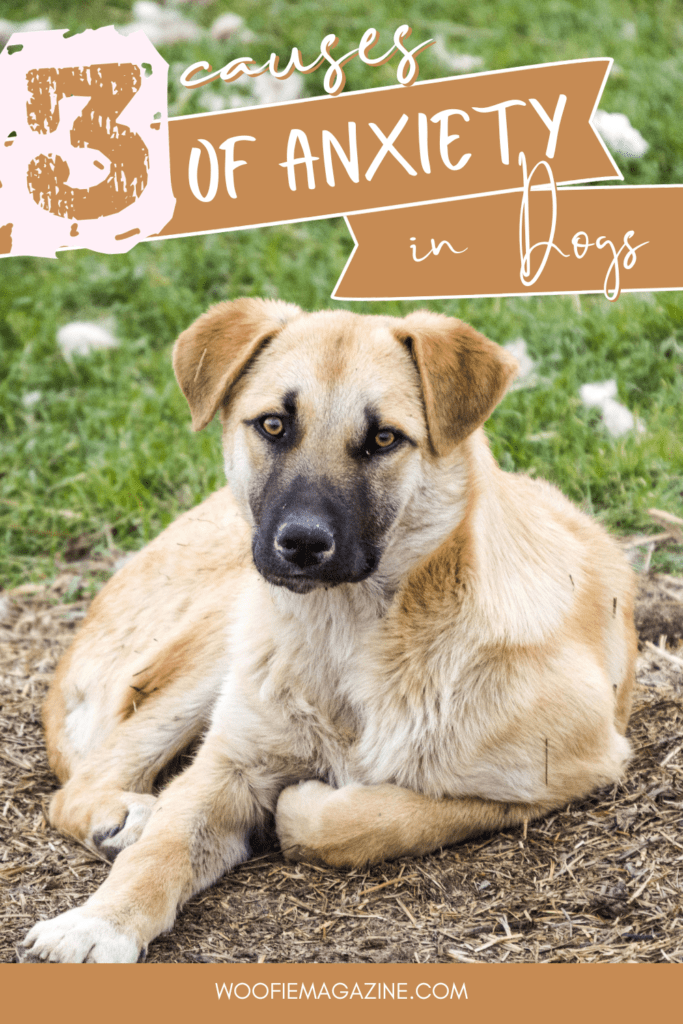

Helping Your Anxious Dog
While the training methods needed to cure anxiety in dogs vary from dog to dog and is also dependent on why your dog is anxious in the first place, you can help them feel safe and secure in your home.
The key to this is providing them with a space where they feel safe, protected and cared for. Showing them that you’re the alpha and that you can keep them safe will help them ease any fearful or anxious emotions. This is especially important if you’ve just moved to a new environment.
You can read up more about treating anxiety in dogs if you want to help your pet. There are many books available which can help to eradicate anxiety in dogs. You will definitely be able to get some tips from these books to help your dog.
However, if you notice that your dog’s anxiety is consistent and recurrent, you might want to consult your vet. If need be, your vet might prescribe medication to help your dog cope with its anxiety issue and its condition will improve over time.
FAQs For Dog Anxiety Symptoms
Video:
